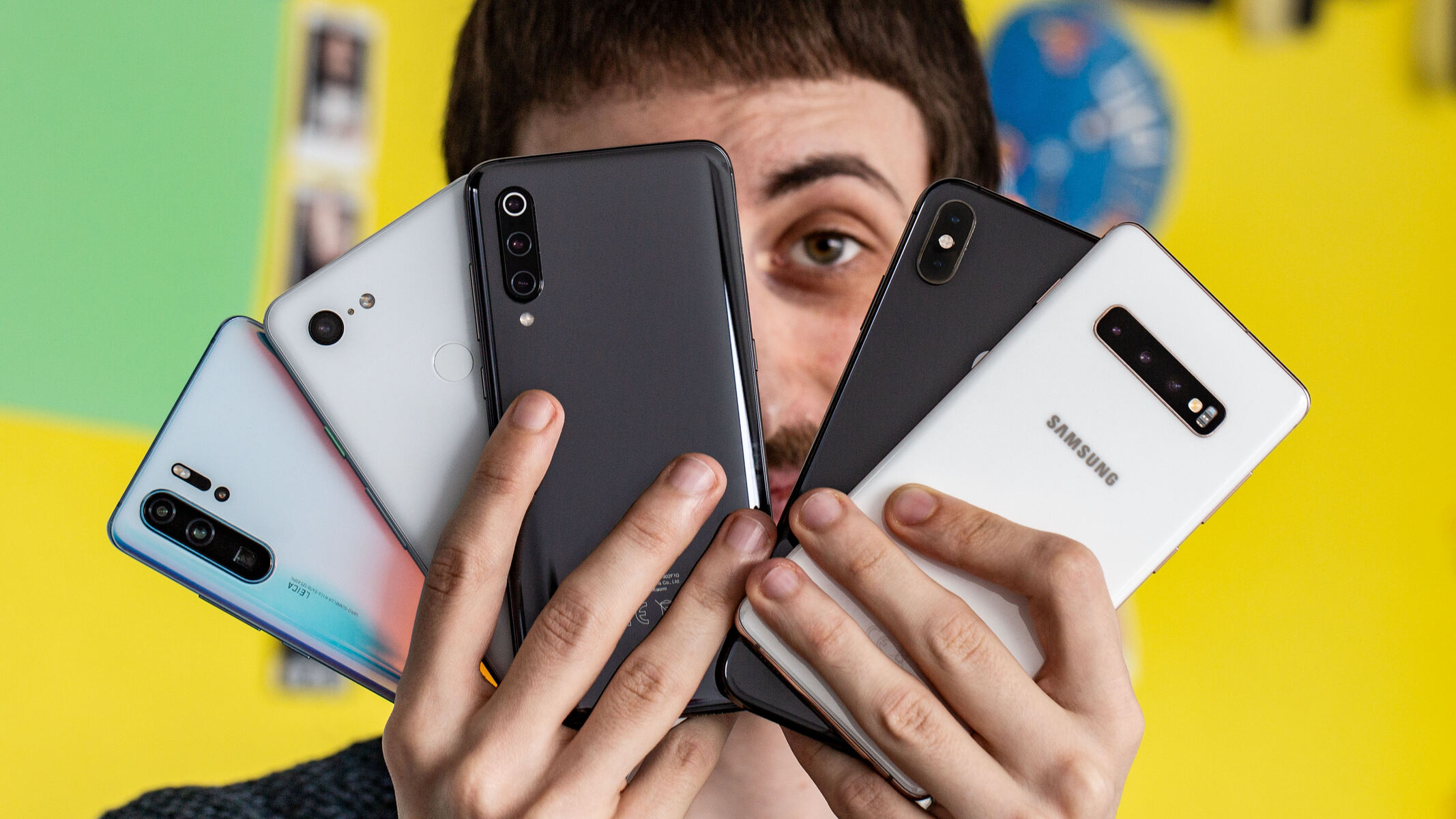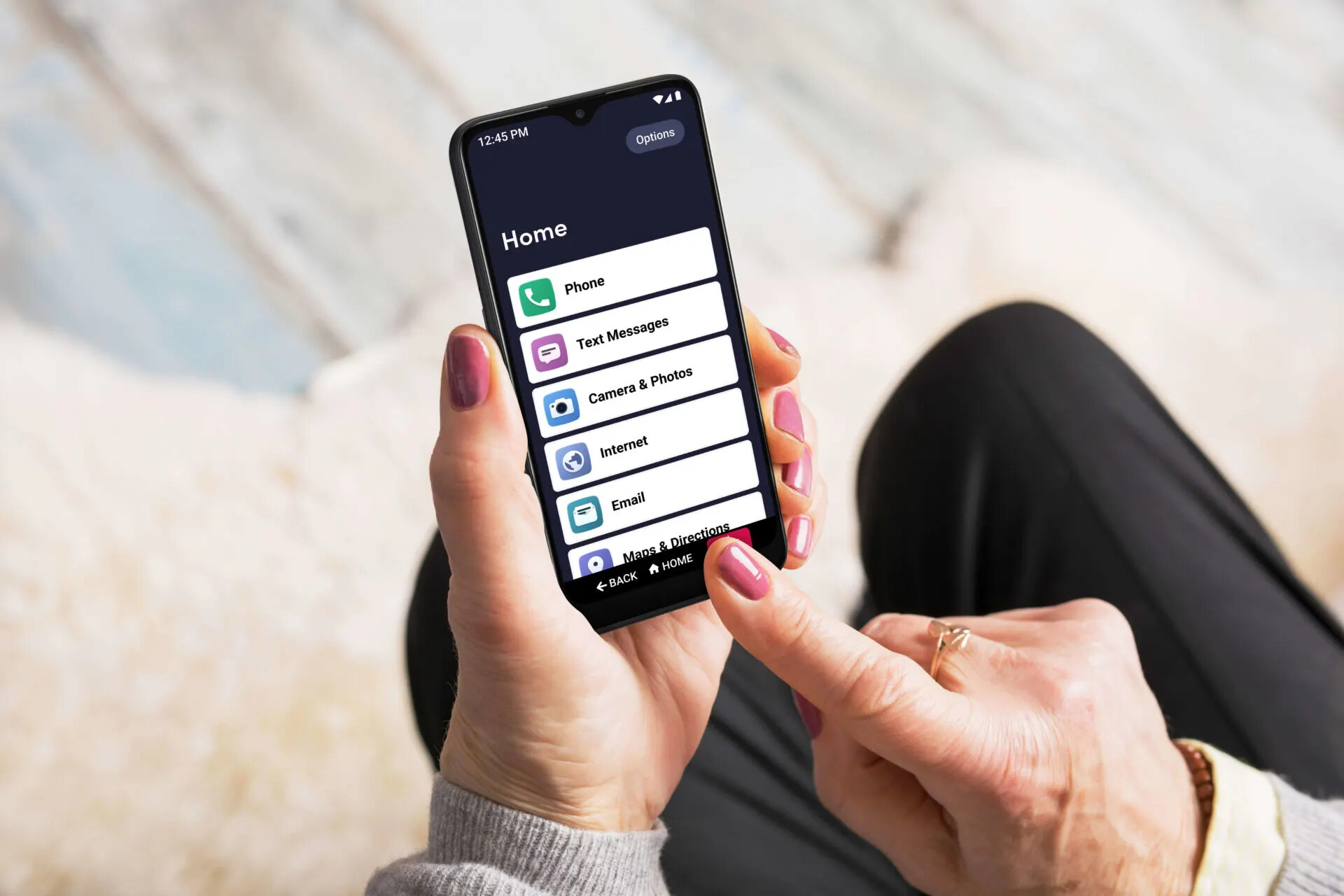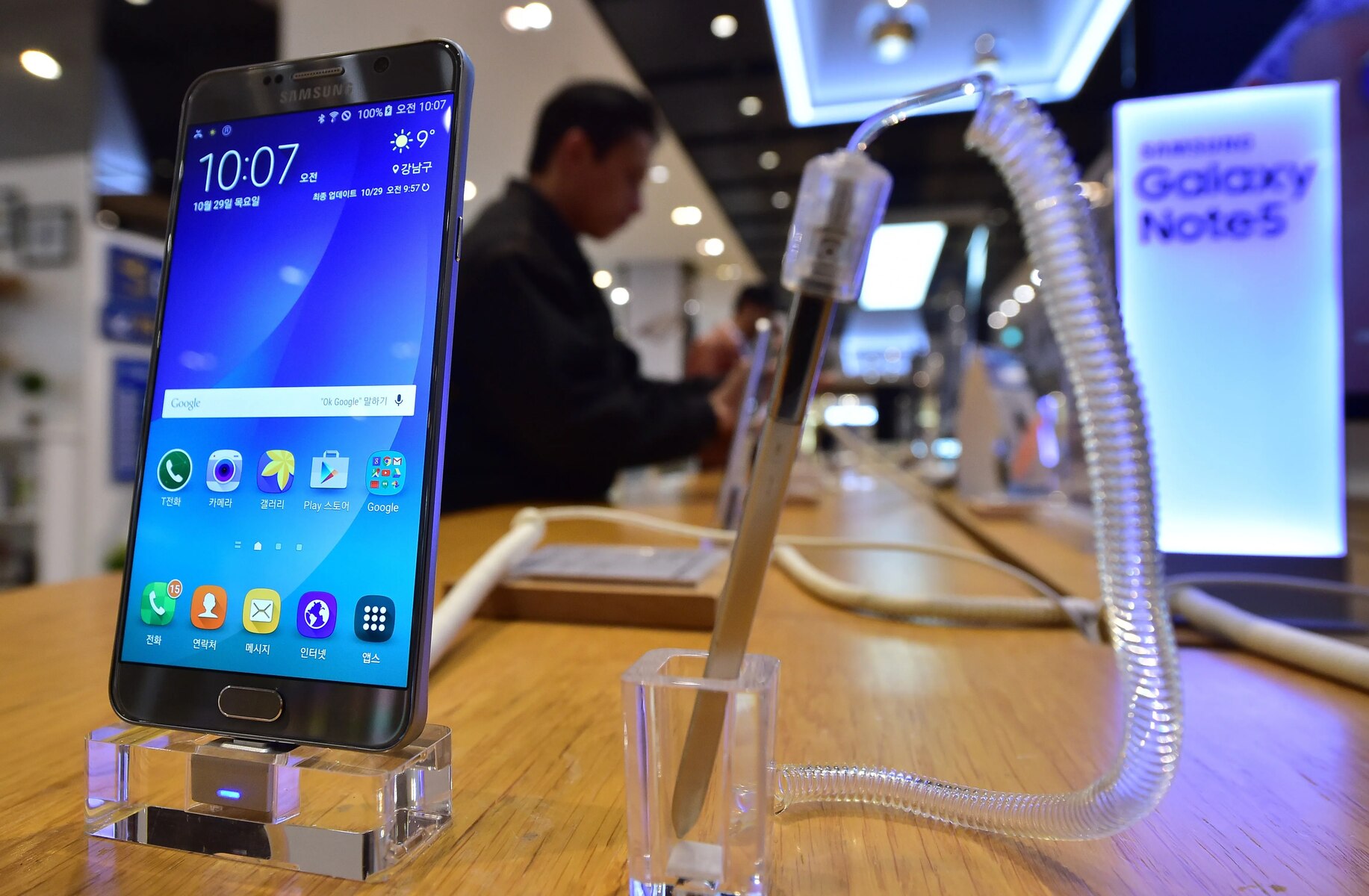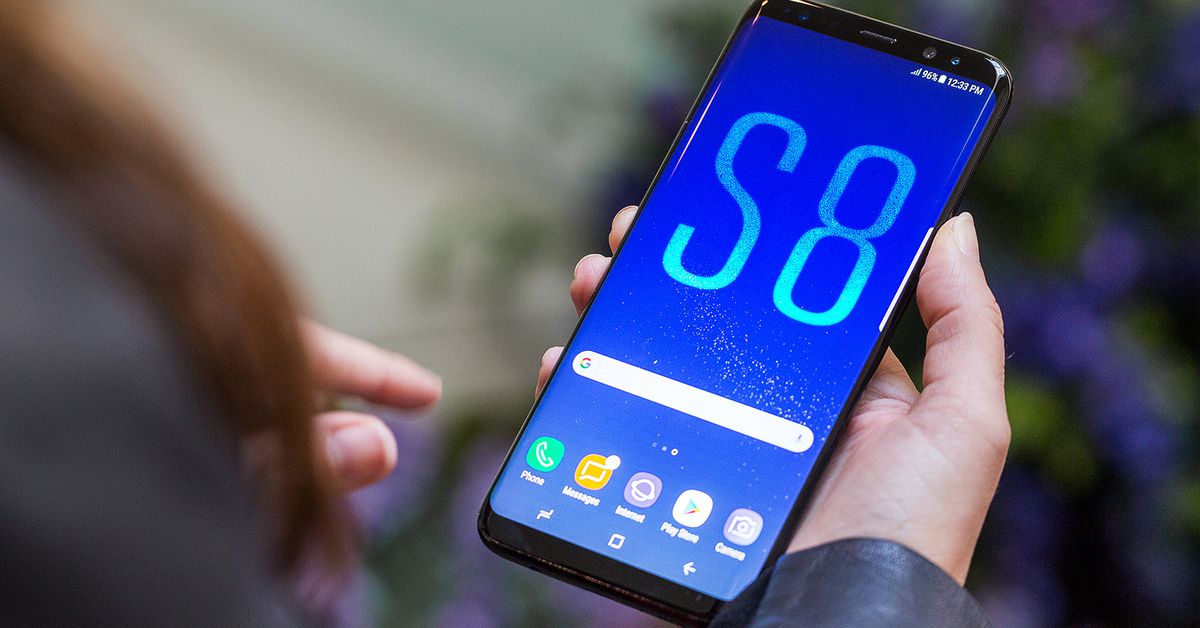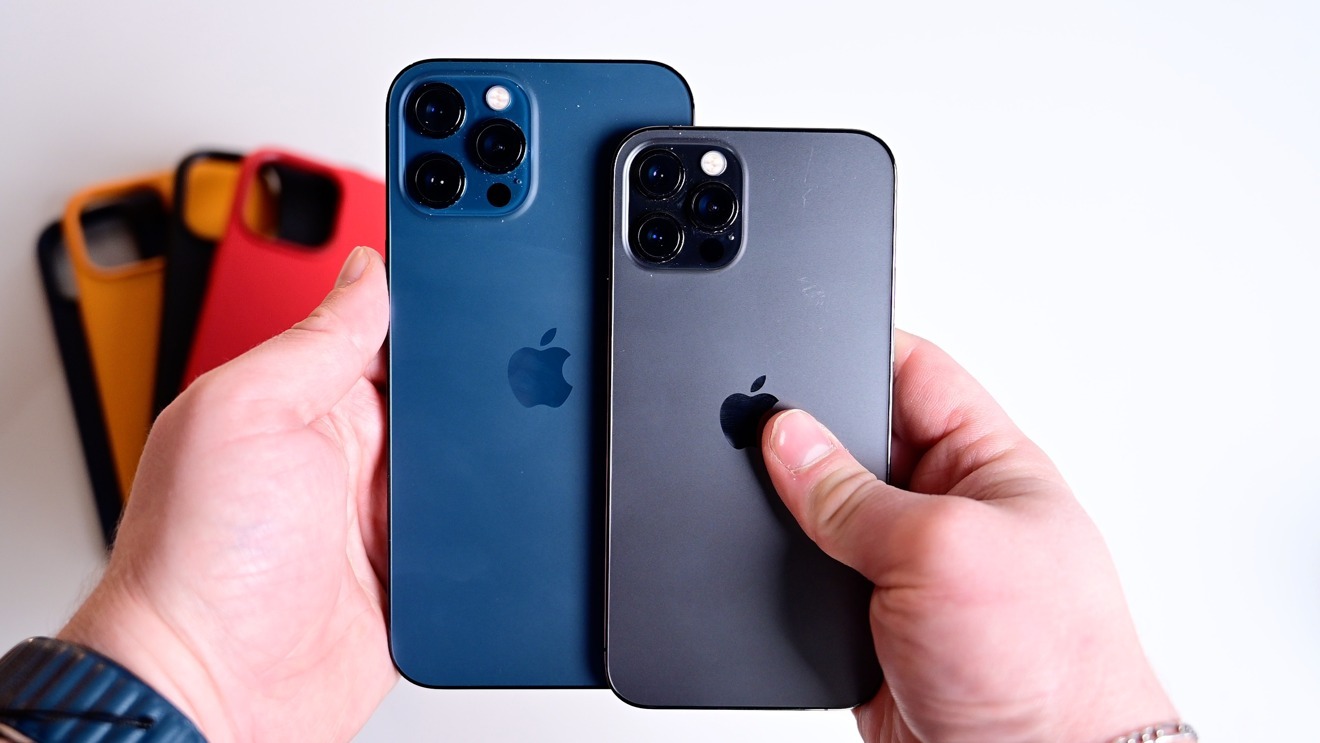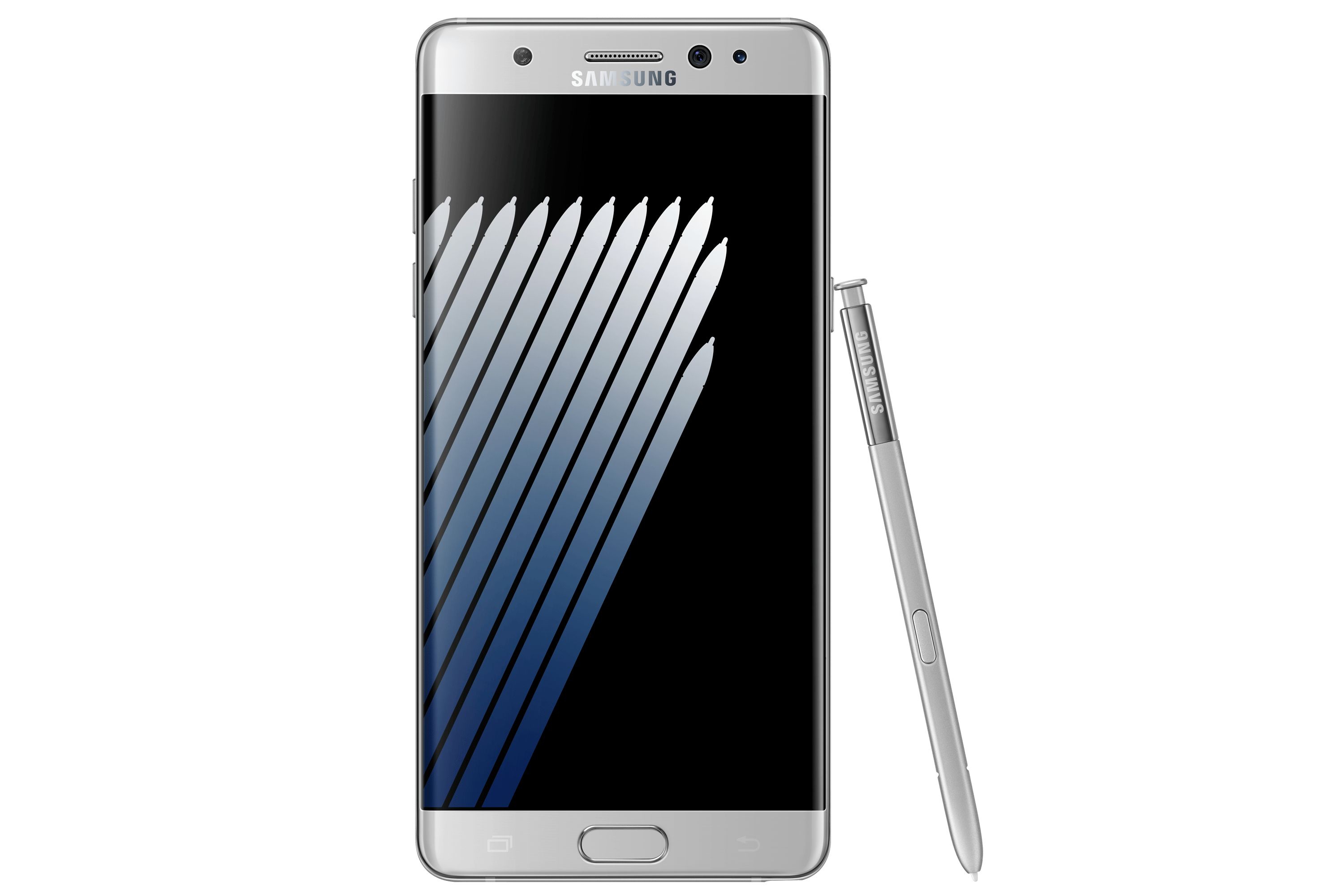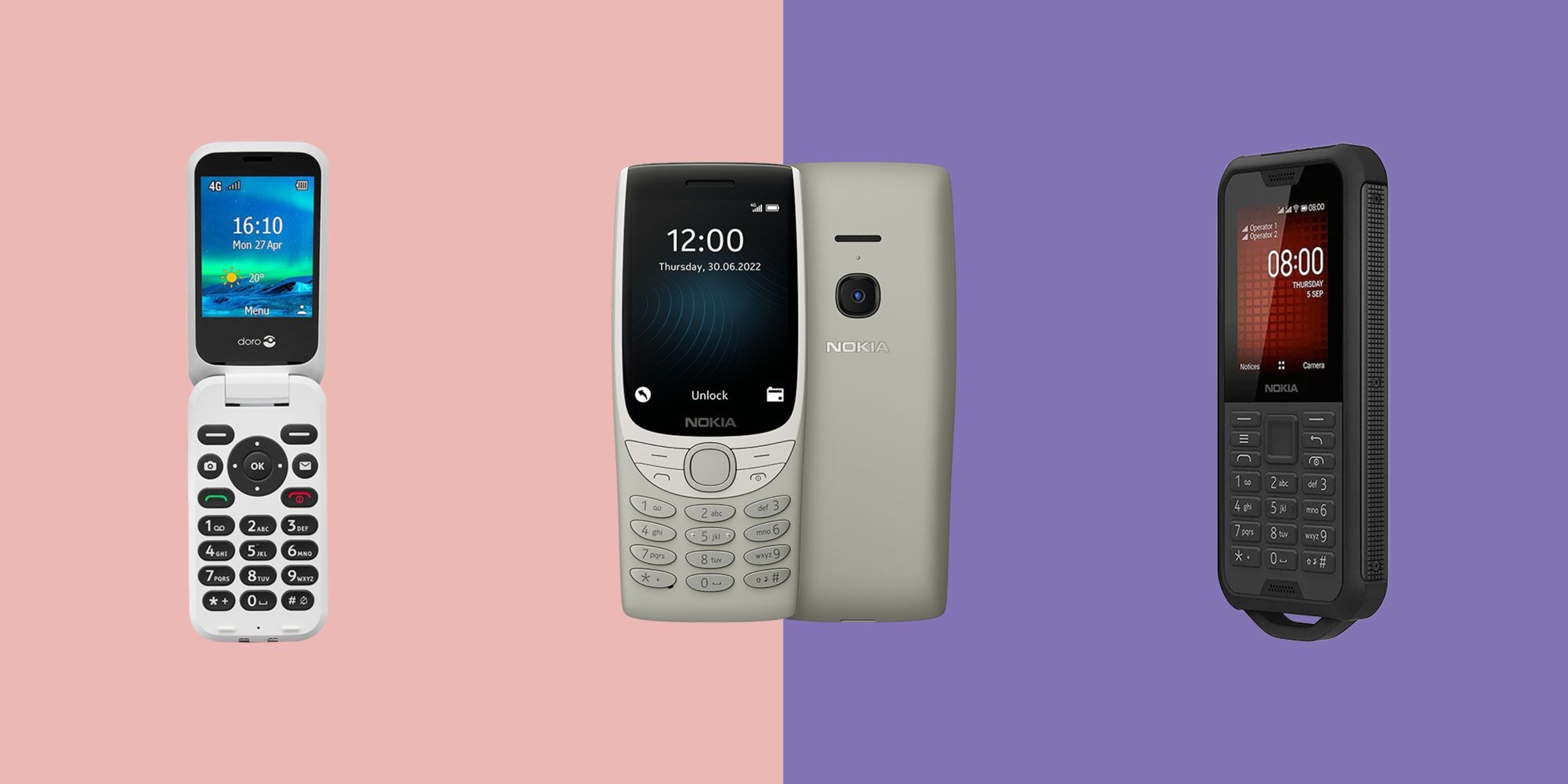Introduction
With the vast array of smartphones available in the market today, finding the perfect one can be a daunting task. Whether you’re a tech enthusiast or a casual user, buying a smartphone is an important decision that shouldn’t be taken lightly. A smartphone has become an integral part of our lives, serving as a communication device, a source of entertainment, and a tool for productivity.
But how do you navigate through the sea of options to find a good smartphone that meets your specific needs? In this guide, I’ll provide you with valuable insights and tips to help you make an informed decision when purchasing a smartphone. From budget considerations to performance evaluations, camera quality to after-sales service, we’ll cover it all.
Before diving into the technical aspects, it’s crucial to evaluate your personal requirements and preferences. Are you an avid photographer who needs a phone with exceptional camera capabilities? Or are you more interested in gaming and require a device with a powerful processor and ample storage? Understanding your usage patterns will guide you in selecting a smartphone that best fits your lifestyle.
Additionally, keep in mind that technology is constantly evolving, and new models are released regularly. It’s worth keeping an eye on upcoming smartphone launches to make an informed decision and possibly get better features at a similar price point. Now without further ado, let’s delve into the factors you should consider when buying a good smartphone.
Decide on Your Budget
One of the most crucial factors to consider when buying a smartphone is your budget. Smartphones come in a wide range of prices, from budget-friendly options to high-end flagship devices. Determining your budget will help narrow down your choices and ensure that you don’t overspend or compromise on essential features.
Consider how much you are willing to spend on a smartphone and what features are most important to you. If you’re on a tight budget, there are plenty of budget-friendly options available that offer decent performance and essential features. These devices may not have all the bells and whistles of their more expensive counterparts, but they can still meet your basic needs and provide a satisfactory user experience.
On the other hand, if you’re willing to invest in a high-end smartphone, you can expect superior performance, cutting-edge features, and an exceptional camera. These flagship devices often come with a higher price tag, but they offer the latest technology and are built to withstand the test of time.
It’s important to strike a balance between your budget and the features you need. Consider what features are essential for you and prioritize them accordingly. For example, if you’re a photography enthusiast, you may want to allocate a larger portion of your budget towards a smartphone with an excellent camera.
Additionally, keep in mind that smartphone prices can fluctuate over time, especially during sales and promotional periods. It’s worth keeping an eye out for discounts and offers to get the best value for your money. Online retailers and authorized resellers often have competitive prices, so be sure to compare prices at different outlets to secure the best deal.
By setting a budget for your smartphone purchase, you can make a more focused decision and ensure that you get the best value for your money. Remember, it’s not always necessary to go for the most expensive option to get a good smartphone. Assess your needs, compare prices, and choose a device that fits within your budget while meeting your requirements.
Choose the Right Operating System
When it comes to smartphones, one of the key decisions you need to make is choosing the right operating system (OS). The OS determines not only the user interface of your device but also the compatibility with apps, security features, and overall user experience. The two major operating systems dominating the smartphone market are Android and iOS. Let’s take a closer look at each.
Android, developed by Google, is an open-source platform that offers a wide range of devices at varying price points. One of the biggest advantages of Android is its versatility and customization options. You can personalize your device by choosing from a multitude of apps, widgets, and themes available on the Google Play Store. Additionally, Android boasts a large app ecosystem, giving you access to a wide range of applications for productivity, gaming, entertainment, and more.
iOS, developed by Apple, offers a seamless and user-friendly experience across all their devices. Simplicity and ease of use are the hallmarks of iOS, making it a popular choice among users who prefer a streamlined interface. Apple’s App Store is known for its stringent app review process, ensuring that you get access to high-quality apps that are optimized for the iOS ecosystem. Furthermore, iOS benefits from regular software updates, ensuring that your device stays secure and up to date.
When choosing an OS, consider your familiarity with the system and ecosystem. If you’re already accustomed to Apple products and have invested in the Apple ecosystem, sticking with iOS can offer a seamless integration between your devices. On the other hand, if you prefer more freedom to customize your device and have a wide range of options in terms of hardware, Android might be the better choice for you.
Another factor to consider is app availability. While both Android and iOS have a vast selection of apps, it’s worth checking if the specific apps you rely on are available on your preferred OS. Compatibility with other devices and services should also be taken into account. For example, if you use a lot of Google services, Android might be a more natural fit, while iOS integrates seamlessly with other Apple devices such as Macs, iPads, and Apple Watches.
Ultimately, the choice between Android and iOS boils down to personal preference, familiarity, and specific requirements. Consider the user experience, customization options, app ecosystem, and compatibility with your existing devices when deciding on the right operating system for your smartphone.
Consider the Display and Size
The display and size of a smartphone play a crucial role in the overall user experience. The display is not only the interface through which you interact with your device but also affects readability, multimedia consumption, and overall visual appeal. Here are some factors to consider when evaluating the display and size of a smartphone.
Screen Size:
The screen size of a smartphone is measured diagonally and typically ranges from 4 inches to 7 inches or more. Larger screens are ideal for multimedia enthusiasts, gamers, and those who consume a lot of content on their phones. They offer a more immersive experience and make reading, watching videos, and browsing the web more enjoyable. However, large screens may make one-handed usage challenging and can be less portable.
On the other hand, smaller screens are more compact and easier to handle, making them ideal for users who prefer one-handed usage or have smaller hands. They are also more pocket-friendly and convenient for those who prioritize portability.
Screen Resolution:
The resolution of a smartphone’s display determines the sharpness and clarity of images and text. It is measured in pixels and typically represented as Width x Height, such as 1080 x 2340 pixels. Higher resolution displays offer better image quality, sharper texts, and more vibrant colors. They are especially beneficial for tasks like reading, photo editing, and watching high-definition videos. However, keep in mind that higher resolution displays can drain the battery faster and may impact overall performance.
Display Technology:
Smartphone displays come in various technologies, with the most common being LCD and OLED. LCD (Liquid Crystal Display) screens offer good image quality and are typically found on budget-friendly and mid-range smartphones. OLED (Organic Light Emitting Diode) screens, on the other hand, provide deeper blacks, better contrast, and more vibrant colors. These displays are usually found on higher-end smartphones and offer a visually stunning experience.
Notch or Not:
Many smartphones nowadays come with a notch, a small cutout at the top of the screen to house the front-facing camera and other sensors. Notches can vary in shape and size, such as a teardrop notch or a wider notch. While some people find notches distracting, others appreciate them as they enable a larger screen-to-body ratio. If you have a preference for a notch or prefer a truly bezel-less display, consider this factor when choosing a smartphone.
When considering the display and size of a smartphone, it’s important to strike a balance between personal preference, usability, and practicality. Assess your needs, whether it’s a larger screen for media consumption or a more compact device for portability. Additionally, consider the resolution, display technology, and features like notches to find a smartphone display that suits your requirements and provides an immersive and visually pleasing experience.
Evaluate the Performance and Processor
When purchasing a smartphone, evaluating the performance and processor is essential to ensure a smooth and responsive user experience. The performance of a smartphone is influenced by several factors, with the processor being one of the most important. Here are some key aspects to consider when evaluating the performance of a smartphone.
Processor:
The processor, often referred to as the central processing unit (CPU), is the brain of a smartphone. It handles various tasks such as app processing, multitasking, and overall device performance. Processors are manufactured by companies like Qualcomm, MediaTek, and Apple. Different models of processors offer varying levels of performance, efficiency, and features. The higher the model number or generation of the processor, the better the performance tends to be. If you’re a power user or engage in resource-intensive tasks like gaming or video editing, consider a smartphone with a higher-end processor for smoother performance.
RAM:
RAM (Random Access Memory) is the temporary storage space that a smartphone’s processor uses to access data quickly. More RAM allows for smoother multitasking, faster app switching, and improved overall performance. Consider a smartphone with a minimum of 4GB of RAM for satisfactory performance in day-to-day tasks. However, if you frequently use resource-intensive apps or multitask heavily, consider a device with 6GB or more RAM to ensure optimal performance.
Internal Storage:
Internal storage capacity determines how much space you have to store apps, files, photos, and videos on your smartphone. While many smartphones now offer expandable storage options via microSD cards, having ample internal storage is still important. Consider your storage needs and opt for a smartphone with sufficient internal storage capacity, preferably 64GB or higher. If you’re someone who captures a lot of photos and videos, or downloads large apps and games, you may need even more storage capacity. Keep in mind that some smartphones offer higher-tier models with larger storage options if needed.
Benchmarking:
Benchmarking is a method of measuring and comparing the performance of smartphones using standardized tests. Various benchmarking tools are available online, such as Geekbench and Antutu, which provide scores based on the device’s processor performance, graphics capabilities, and RAM. While benchmarking scores can give you a general idea of a smartphone’s performance, keep in mind that real-world usage may vary. It’s always a good idea to look up unbiased reviews and read user feedback to get a better understanding of a smartphone’s performance in everyday scenarios.
It’s important to remember that performance is not solely determined by the processor and RAM. The optimization of the operating system and the software running on the device also play a significant role. Consider reading reviews and user opinions to gain insights into a smartphone’s performance and real-world usability.
By evaluating the performance and processor of a smartphone, you can ensure that you choose a device that meets your performance requirements and delivers a smooth and seamless user experience. Take into account factors like the processor model, RAM, internal storage, and benchmarking scores to make an informed decision.
Assess the Camera Quality
The camera has become a key consideration for many people when purchasing a smartphone. Whether you’re a photography enthusiast or just someone who enjoys capturing moments on the go, assessing the camera quality is important. Here are some factors to consider when evaluating the camera capabilities of a smartphone.
Resolution and Megapixels:
The resolution of a camera is measured in megapixels (MP) and determines the level of detail in the photos you capture. Higher megapixel counts generally result in sharper images, especially when zoomed in or printed in larger sizes. However, keep in mind that megapixel count is not the only factor impacting image quality, as other factors like sensor size and image processing also play a significant role.
Camera Features:
Besides resolution, consider the additional features offered by the camera. Some smartphones come with multiple lenses, such as a wide-angle lens, telephoto lens, or macro lens, which allow you to capture different types of shots without compromising on quality. Optical image stabilization (OIS) is another important feature that helps reduce blurriness caused by hand movements, resulting in sharper images.
Low-light Performance:
Photography in low-light conditions can be challenging due to decreased light availability. Evaluate the smartphone’s camera performance in low-light situations by checking reviews or sample images taken in low-light environments. Look for features like larger pixel size (in µm), wider aperture (lower f-stop values), and night modes, as these can significantly improve low-light photography.
Image Processing and Software:
The camera software and image processing algorithms used by a smartphone can have a significant impact on image quality. Some smartphones employ advanced computational photography techniques to enhance images, including post-processing for improved dynamic range, noise reduction, and color accuracy. Consider researching the camera software capabilities and reading reviews to gain insights into how it performs in various conditions.
Front-facing Camera:
If you’re someone who frequently takes selfies or video calls, don’t overlook the front-facing camera. Evaluate the resolution, features, and image quality of the front-facing camera, as it is just as important as the rear camera for capturing self-portraits and conducting video chats.
Ultimately, the camera quality of a smartphone is subjective and depends on your specific needs and preferences. When evaluating camera capabilities, consider the resolution, additional features, low-light performance, image processing, and front-facing camera. It’s a good idea to read reviews, look at sample images, and compare camera performance across different smartphone models to find a device that aligns with your photography requirements.
Battery Life and Charging Options
Battery life is a crucial consideration when choosing a smartphone, as it determines how long the device can last on a single charge. Having a smartphone with reliable battery life ensures that you can go through your day without constantly worrying about finding a power outlet. Here are some factors to consider when assessing battery life and charging options.
Battery Capacity:
Battery capacity is measured in milliampere-hours (mAh) and indicates the amount of charge a battery can hold. Generally, a higher battery capacity translates to longer battery life. However, keep in mind that battery capacity is not the only factor influencing battery life, as factors like software optimization and power efficiency also play a role.
Usage Patterns:
Consider your personal usage patterns when evaluating battery life. If you heavily use power-hungry apps, play games, or stream videos, you’ll require a smartphone with a larger battery capacity to sustain your usage throughout the day. Conversely, if you primarily use your smartphone for basic tasks like calls, messaging, and browsing, a smaller battery capacity may still suffice.
Charging Speed:
Charging speed is an essential factor to consider, especially when you need to quickly recharge your device. Some smartphones support fast charging technologies like Qualcomm’s Quick Charge or USB Power Delivery, enabling faster charging times compared to conventional charging methods. Additionally, wireless charging capabilities may be a desirable feature if you prefer the convenience of wire-free charging.
Battery Optimization:
Software optimization plays a crucial role in maximizing battery life. Operating systems like Android and iOS offer battery optimization features that help prolong battery life. These features include power-saving modes, background app restrictions, and adaptive battery management. Consider the effectiveness of such battery optimization features when evaluating a smartphone’s battery performance.
User-Replaceable or Non-Replaceable Battery:
Some smartphones feature user-replaceable batteries, allowing you to easily swap out a depleted battery for a fully charged one. This can be beneficial if you often find yourself in situations where access to a power source is limited. However, many modern smartphones come with non-replaceable batteries, which require professional help or specialized tools for replacement.
It’s important to note that battery life can vary based on various factors such as screen brightness, connectivity options, app usage, and signal strength. While manufacturers often provide estimates for battery life, real-world usage may differ. Reading user reviews and looking for independent tests or comparisons can provide a more accurate idea of a smartphone’s battery performance.
By considering factors like battery capacity, charging speed, battery optimization features, and user-replaceable options, you can select a smartphone with a battery life that aligns with your usage requirements. Keep in mind that no smartphone can offer unlimited battery life, so it’s always a good idea to carry a portable charger or power bank for emergencies when you’re on the go.
Storage and Memory
When selecting a smartphone, it’s important to consider the storage and memory capacities to ensure that the device can handle your app installations, media files, and multitasking needs. Here are some factors to consider when assessing storage and memory options.
Internal Storage:
Internal storage is the built-in storage capacity of a smartphone, where you can store apps, files, photos, videos, and other data. It’s important to choose a smartphone with sufficient internal storage to accommodate your needs. Consider your usage habits and requirements. If you frequently store large media files like photos, videos, and music, opt for a smartphone with higher storage capacities, such as 64GB, 128GB, or even 256GB.
Expandable Storage:
Some smartphones offer expandable storage options, usually through a microSD card slot. This allows you to add additional storage space to your device, providing flexibility and the ability to store more files. If you have a large media library or tend to frequently download and store files, consider a smartphone that supports expandable storage.
RAM (Random Access Memory):
RAM is the temporary storage space that a smartphone uses to hold data for currently running apps and processes. More RAM allows for smoother multitasking, faster app switching, and better overall performance. When evaluating RAM, consider your usage habits. If you engage in heavy multitasking or use memory-intensive apps, such as games or video editing software, opt for a smartphone with 6GB or more RAM for optimal performance.
Memory Optimization:
Efficient memory management is crucial for a smooth user experience. Both the operating system and the smartphone’s software play a role in memory optimization. Look for smartphones that offer effective memory management systems. Some devices employ features like intelligent app management, which prioritize frequently used apps and optimize system memory allocation for smoother performance.
Cloud Storage Options:
Cloud storage allows you to store files and data online, freeing up space on your smartphone’s internal storage. Some smartphones come with cloud storage services integrated into the operating system, providing seamless integration and backup options for your files. Consider a smartphone that offers cloud storage options if you frequently work with large files or want to keep your data securely backed up.
It’s important to note that the actual available storage on a smartphone may be slightly less than the advertised capacity, as the operating system and pre-installed apps occupy some space. Therefore, it’s advisable to choose a smartphone with slightly higher storage capacity than your immediate needs to allow room for updates and new apps.
By evaluating internal storage capacity, expandable storage options, RAM, and memory optimization features, you can select a smartphone that meets your storage and multitasking requirements. Whether you prefer ample internal storage, the flexibility of expandable storage, or efficient memory management, finding the right balance will ensure that you have enough space and memory to store your files and run apps smoothly.
Connectivity and Network Support
Connectivity and network support are crucial factors to consider when choosing a smartphone, as they determine the device’s ability to connect to various networks and communicate with other devices. Here are some key aspects to evaluate regarding connectivity and network support:
Network Compatibility:
Ensure that the smartphone you choose is compatible with the network bands of your desired mobile carrier. Different regions and carriers use various frequencies for their networks, so it’s important to check if the smartphone supports the required bands for voice calls, text messages, and data connectivity. Typically, smartphones are labeled as GSM or CDMA, and you need to choose one that aligns with your carrier’s network type.
5G Support:
If you’re interested in accessing the latest generation of cellular technology, look for a smartphone that supports 5G connectivity. 5G offers faster download and upload speeds, lower latency, and improved network capacity. However, keep in mind that the availability and coverage of 5G networks vary by location, so consider the current and future network infrastructure in your area before prioritizing 5G support.
Wi-Fi and Bluetooth:
Wi-Fi and Bluetooth connectivity are essential for wireless interactions with other devices. Look for smartphones that support the latest Wi-Fi and Bluetooth standards (such as Wi-Fi 6 and Bluetooth 5.0) for faster data transfer speeds, improved range, and better device compatibility. These features are particularly important if you frequently transfer files wirelessly, connect to smart home devices, or use wireless headphones or speakers.
NFC and Mobile Payments:
If you frequently make mobile payments or use features like contactless card emulation or tap-to-pair with other NFC-enabled devices, ensure that the smartphone supports Near Field Communication (NFC) technology. NFC allows for seamless and secure communication between devices over short distances, enabling convenient mobile payments and various other interactions.
GPS and Navigation:
A smartphone’s ability to accurately determine your geographic location is vital for navigation apps, tracking fitness activities, and location-based services. Look for smartphones with built-in GPS (Global Positioning System) and other location-based services like GLONASS and Galileo for improved accuracy and reliability.
USB and Other Ports:
Consider the type and number of ports available on the smartphone. USB Type-C ports are becoming more common and offer faster data transfer and charging speeds. Additionally, some smartphones may include other ports like HDMI or headphone jacks, depending on your specific needs.
It’s also worth considering other connectivity options such as infrared blasters for controlling appliances, dual SIM support for using two phone numbers on a single device, and any other features that align with your usage requirements.
By evaluating network compatibility, 5G support, Wi-Fi and Bluetooth standards, NFC capabilities, GPS functionality, and available ports, you can ensure that the smartphone you choose provides seamless connectivity options and meets your specific communication and connectivity needs.
Software and User Interface
The software and user interface of a smartphone greatly impact the overall user experience. It determines how you interact with the device, the availability of features, and the level of customization. Here are some important aspects to consider when evaluating the software and user interface of a smartphone.
Operating System:
The operating system (OS) is the software platform that runs on your smartphone. The two main mobile operating systems are Android and iOS. Android, developed by Google, offers a highly customizable user interface, a vast app ecosystem, and compatibility with a wide range of devices. iOS, developed by Apple, offers a more streamlined and unified experience across Apple devices, superior security features, and a curated app store. Consider your preferences and familiarity with each operating system when choosing a smartphone.
User Interface (UI):
The user interface is the visual layout and design of a smartphone’s software. It includes elements such as icons, menus, notifications, and home screens. Different smartphone manufacturers often customize the UI on top of the base operating system. Look for a UI that is intuitive, responsive, and visually appealing. Consider if the UI offers features like app drawer, customizable themes, or gesture navigation that align with your usage preferences.
Software Updates:
Regular software updates are essential for bug fixes, security patches, and the addition of new features. Evaluate the track record of the smartphone manufacturer in providing timely and long-term software updates. Manufacturers that actively support and release updates for their devices ensure that you have access to the latest features and security enhancements even after you purchase the smartphone.
Pre-installed Apps and Bloatware:
Check for pre-installed apps that come with the smartphone. Some devices may come with apps that you may not need or use, which can take up storage space and impact performance. Look for smartphones that offer a clean and minimalistic user interface, providing the flexibility to customize your app collection according to your preferences.
Gestures and Navigation:
Smartphones now offer a variety of navigation options, including traditional buttons, gesture navigation, or a combination of both. Gesture navigation involves swiping or tapping on different parts of the screen to navigate the user interface. Consider the available navigation options and choose the one that feels most comfortable and intuitive to you.
Additional Software Features:
Look for additional software features that enhance the usability and functionality of the smartphone. These may include features like split-screen multitasking, one-handed mode, built-in screen recording, gaming modes, and more. Consider your specific needs and preferences to ensure that the smartphone offers features that will enhance your daily use.
By evaluating the operating system, user interface, software update frequency, pre-installed apps, navigation options, and additional software features, you can choose a smartphone that provides a seamless and personalized user experience that aligns with your preferences and usage habits.
Design and Build Quality
The design and build quality of a smartphone not only contribute to its aesthetic appeal but also determine its durability and overall feel in hand. When selecting a smartphone, consider the design elements and build quality that align with your preferences and requirements. Here are some factors to consider when evaluating the design and build quality of a smartphone.
Materials:
The materials used in the construction of a smartphone greatly impact its build quality, weight, and overall durability. Common materials include plastic, metal, glass, and ceramic. Plastic offers durability and cost-effectiveness, while metal and glass provide a more premium and elegant look. Ceramic is relatively less common but offers a unique and high-end feel.
Ergonomics:
Ergonomics refers to the design of a smartphone for comfortable and convenient usage. Consider the size, weight, and form factor of the device. Look for smartphones that fit comfortably in your hand and have rounded edges for a better grip. It’s also important to assess how easily accessible the buttons, fingerprint sensor, and other physical features are for a seamless user experience.
Screen-to-Body Ratio:
The screen-to-body ratio refers to the amount of display compared to the overall size of the smartphone. A higher screen-to-body ratio indicates a more immersive viewing experience with minimal bezels. Consider smartphones with slim bezels, notches, or punch-hole displays that offer larger screen sizes without significantly increasing the overall dimensions of the device.
Water and Dust Resistance:
Water and dust resistance ratings indicate how well a smartphone can withstand exposure to water and dust particles. Look for devices with an IP67 or IP68 rating, which offer varying levels of water and dust resistance. This feature is particularly beneficial if you often use your smartphone in outdoor or challenging environments, or if you’re prone to accidental spills or drops.
Build Durability:
Consider the build durability of a smartphone, especially if you want a device that can withstand daily wear and tear. Some smartphones feature reinforced frames, shock-resistant designs, or Corning Gorilla Glass protection to enhance durability. Look for durability features if you’re concerned about accidental drops or impacts.
Colors and Aesthetics:
Color options and overall aesthetics play a significant role in your smartphone buying decision. Manufacturers often offer smartphones in a range of colors and finishes, allowing you to choose a device that reflects your personal style and preferences.
It’s important to note that design and build quality are subjective factors, and what may appeal to one person may not necessarily be preferred by another. Assess your preferences, lifestyle, and intended usage to find a smartphone with a design and build quality that matches your needs and preferences.
By considering materials, ergonomics, screen-to-body ratio, water and dust resistance, build durability, colors, and aesthetics, you can select a smartphone that not only offers a pleasing visual experience but also provides a sturdy and comfortable device to use in your daily life.
Additional Features
When choosing a smartphone, it’s worth considering the additional features that can enhance your user experience and cater to your specific needs. Here are some features to look out for when evaluating smartphones:
Fingerprint Sensor or Face Unlock:
Security features like fingerprint sensors or face unlock can provide convenient and secure ways to unlock your smartphone. Fingerprint sensors offer quick and accurate authentication, while face unlock uses facial recognition technology for seamless access.
Wireless Charging:
Wireless charging eliminates the need for cables and allows you to charge your smartphone by simply placing it on a compatible charging pad. This feature offers convenience and reduces wear and tear on charging ports over time.
Dual SIM Support:
Dual SIM support allows you to use two phone numbers on the same device. It can be helpful if you want to keep work and personal numbers separate or if you frequently travel and need to use local SIM cards.
Expandable Features:
Some smartphones offer expandable features such as storage or additional functionality through modular accessories. These can include attachable camera lenses, battery packs, or other peripherals that enhance the capabilities of your smartphone.
IR Blaster:
An infrared (IR) blaster allows your smartphone to function as a universal remote control for various electronic devices like TVs, air conditioners, and more. This feature can consolidate multiple remote controls into one device.
Biometric Sensors:
Some smartphones offer additional biometric sensors beyond fingerprint or face recognition. These can include iris scanners or even in-display fingerprint sensors that provide alternative and secure authentication methods.
Enhanced Audio:
If you enjoy audio experiences, look for smartphones with features like stereo speakers, optimized audio codecs, or support for high-resolution audio formats. Some devices also offer advanced audio features like Dolby Atmos for a more immersive sound experience.
Physical Keyboard:
For users who prefer physical keyboards, some smartphones offer slide-out or detachable keyboards for faster and more accurate typing.
Gesture Controls and Motion Sensors:
Some smartphones feature gesture controls and motion sensors that allow for hands-free controls or intuitive interactions. This can include gestures for launching apps or silencing calls, or even a flip or twist motion to activate specific features.
These are just a few examples of additional features that smartphones may offer. Consider your preferences and requirements when evaluating smartphones, and prioritize the features that will enhance your user experience and align with your lifestyle.
It’s important to note that not all smartphones will have all these features, as the availability of additional features can vary between models and brands. Research and compare different smartphones to find the one that offers the additional features you desire.
Consider After-Sales Service and Support
After-sales service and support are important considerations when purchasing a smartphone. While you hope that your device functions flawlessly, it’s essential to be prepared for any future issues or the need for assistance. Here are some factors to consider regarding after-sales service and support:
Warranty:
Check the warranty offered by the smartphone manufacturer. Most smartphones come with a standard one-year warranty that covers manufacturing defects. Some manufacturers may offer extended warranty options for an additional cost. Read the terms and conditions of the warranty to ensure you understand what is covered and the process for filing a claim.
Service Centers:
Consider the availability and proximity of authorized service centers for the smartphone brand you’re considering. Having local service centers can be beneficial if you encounter any issues or need repairs. Check if the manufacturer has a strong service network in your area or region.
Customer Support:
Evaluate the quality and responsiveness of the manufacturer’s customer support channels. Look for customer reviews or feedback regarding their experience with the manufacturer’s support services. Prompt and helpful customer support can be invaluable if you encounter any issues or have questions about your smartphone.
Software Updates:
Regular software updates are not only important for security but also for new features and performance optimization. Research the manufacturer’s track record for providing timely and long-term software updates. A commitment to software updates ensures that your smartphone remains up to date and compatible with the latest applications.
Spare Parts Availability:
Consider the availability of spare parts for the smartphone you’re interested in. In case you need a replacement part, it’s essential that the manufacturer can provide it conveniently without long delays or exorbitant costs. This is particularly important for devices with non-removable batteries or sealed designs.
Online Resources and Community:
Look for online resources and support communities dedicated to the smartphone brand or model. These can be helpful for troubleshooting common issues or learning tips and tricks from experienced users. Assess the manufacturer’s online presence and the availability of official forums or support channels.
Reviews and Reputation:
Consider the manufacturer’s reputation for after-sales support and service. Read user reviews and feedback to gauge the general satisfaction level among customers. A reliable and reputable manufacturer is more likely to provide excellent after-sales support and resolve any issues effectively.
By considering factors like warranty coverage, availability of service centers, quality of customer support, software update policy, spare parts availability, online resources, and the manufacturer’s reputation, you can make an informed decision regarding after-sales service and support. A smartphone with reliable after-sales support ensures that you can receive assistance when needed and enjoy a seamless ownership experience.
Research and Read Reviews
One of the most important steps in buying a smartphone is conducting thorough research and reading reviews. This helps you gather information, gain insights from real users, and make an informed decision. Here are some tips for effective research and review reading:
Specifications and Features:
Start by researching the specifications and features of the smartphones you’re interested in. Visit the manufacturers’ websites or reputable technology review websites to gather information about the device’s hardware, camera capabilities, battery life, display quality, and other key features. Consider how these specifications align with your specific needs and preferences.
Expert Reviews:
Read reviews by technology experts and industry professionals. These reviews provide in-depth analysis, hands-on experiences, and objective opinions. Expert reviews highlight both the strengths and weaknesses of a smartphone, helping you understand its performance, usability, and overall value for money. Look for reviews from reputable sources that have a track record of thorough and unbiased assessments.
User Reviews and Ratings:
Reading user reviews and ratings can provide valuable insights into the real-world experiences of smartphone owners. Consider the overall sentiment and feedback from users, paying attention to specific aspects that are important to you. Keep in mind that individual experiences may vary, so consider multiple user reviews to get a broader perspective.
Comparison Websites:
Comparison websites can be helpful in comparing different smartphone models side by side. These websites often provide detailed feature comparisons, pricing information, and user reviews. By comparing various aspects of different smartphones, you can narrow down your options and make a more informed decision.
Hands-on Experience:
If possible, try to experience the smartphones in person by visiting retail stores or attending technology expos. Physical interaction with a device can give you a better feel for its build quality, ergonomics, and user interface. Some stores may even have demo units available for you to try out the features and functionalities of the smartphone.
Consider the Source:
When reading reviews, consider the credibility and reputation of the source. Look for reviews from reputable technology websites, verified purchasers, or known technology enthusiasts. Be cautious of overly positive or negative reviews that may be biased or sponsored. A variety of perspectives can help you form a more comprehensive understanding of a smartphone.
It’s important to remember that the perfect smartphone does not exist, and different individuals have different preferences and requirements. Reviews and research can guide you towards finding the ideal smartphone that aligns with your needs and priorities.
By conducting thorough research, reading expert and user reviews, comparing specifications and features, and considering credible sources, you can gather valuable information to make an informed decision when purchasing a smartphone.
Conclusion
Choosing a good smartphone requires careful consideration of various factors to ensure that it meets your specific needs and preferences. By following the guidelines outlined in this article, you can make an informed decision and find a smartphone that provides a seamless user experience.
Start by determining your budget and prioritizing the features that matter most to you. Consider the operating system, display and size, performance and processor, camera quality, battery life and charging options, storage and memory, connectivity and network support, software and user interface, design and build quality, additional features, after-sales service and support, and lastly, conducting thorough research and reading reviews.
Remember that no smartphone is perfect, and there will always be trade-offs depending on your priorities. Take into account your usage patterns, personal preferences, and intended usage of the device to find the right balance between features, performance, and affordability. Additionally, keep an eye on upcoming smartphone releases to make the most informed decision and possibly get better features at a similar price point.
Ultimately, your satisfaction with a smartphone will depend on how well it aligns with your specific needs and enhances your daily life. Take the time to evaluate and compare different options, read reviews, and consider firsthand experiences to ensure that you find a smartphone that delivers the functionality, performance, and value you desire.
With proper research and analysis, you can find the perfect smartphone that not only meets your requirements but also keeps you connected, productive, and entertained in today’s digital world.







